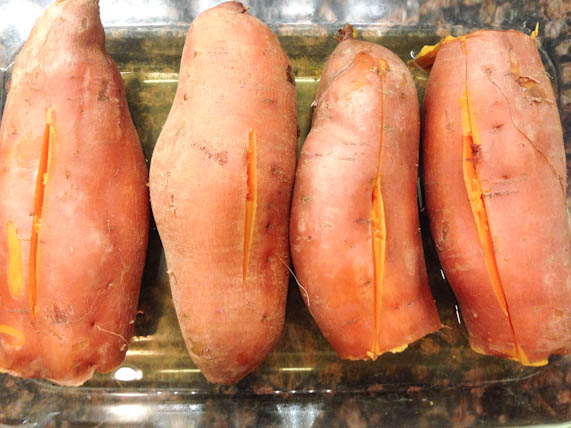My area is a major sweet potato producing region so naturally, we have lots of cheap surplus sweet potatoes and over the past month, I have been experimenting with these on poultry feeds in small amounts and the result so far has been great, the chickens have put on weight and are as healthy as ever.

But that led me to dig further to establish the suitability of sweet potatoes as a poultry feed. Like other grains used in poultry feed formulation, sweet potato also contains 90% starch so it should be great for poultry feeding but why isn’t it being used on a large scale in poultry feeds? I did a little research on the internet to establish if this is already happening in other regions, its suitability and the optimal amounts of sweet potato raw materials in poultry feed ingredients that could be considered suitable in terms of the nutritional advantage.
Sweet potato has been used in poultry feeding in some countries like Japan and other Asian nations since the mid 50s. Research has shown that cooked sweet potato is 90% digestible in chicks and can also serve as a protein supplement in the chicks. Sweet potatoes are also a rich source of some essential vitamins and minerals for the poultry.
However, it has been found that chicks that are fed on a starter diet that consists of the traditional grains such as maize reached a slaughter weight faster than those fed on a sweet potato poultry feed diet. Research however shows that meat from poultry that are fed on a diet where the 75% of the corn was replaced with sweet potatoes had a great flavor.
The carbohydrate component in sweet potatoes is 90% digestible in chicks. As an energy source, sweet potatoes are as efficiently used as maize in poultry. However, you have to watch out on the substitution levels. Researchers don’t recommend substituting 100% corn or maize with sweet potatoes. The best feed conversion efficiency has been found where the sweet potato tubers replaced between 25% to 40% of the glucose that is in the basal diet. At this rate, you can get efficient carbohydrate utilization. This can help farmers radically cut down on the cost of feeds. Grains are highly costly and if you can safely substitute 25% to 40% of grains with sweet potatoes and still get an optimal feed conversion, then sweet potato will help a great deal in lowering the cost of poultry feeding.
The research was further extended to two week old birds which were fed sweet potato rations that replaced 0%, 50%, 75% and 100% of the corn between the age of two weeks to six weeks. A comparison on the birds was done based on the feed intake, the weight gain, the feed efficiency, digestibility and dressing percentage. According to the research, the performance of the birds that were fed sweet potatoes was satisfactory at lower rates of substitution but tended to drop at higher levels of substitution which buttresses the first point that sweet potato substitution is most effective when done at lower percentages. Researchers recommend that sweet potato should at most replace only 50% of corn. That is, if you are planning to formulate poultry feeds using sweet potatoes, it should not constitute more than 50% of the carbohydrate content in order to get the best performance from the birds.
I found another interesting research from New Zealand that gives different optimal proportions for use of sweet potatoes in the poultry feeds. This one recommends that:-
- For young birds that are less than 8 weeks old, you should not use more than 20% sweet potato meal. So if you are mixing a 10kg ration, the sweet potato meal should only constitute 2kg.
- As the birds grow old, you can gradually increase the ration of sweet potato meal. In laying chickens, the sweet potato meal should never exceed 30%.
- The main issue is that sweet potato meal is powdery and dusty and this may pose a feed conversion problem.
Another research on use of sweet potato tubers in poultry feed rations.